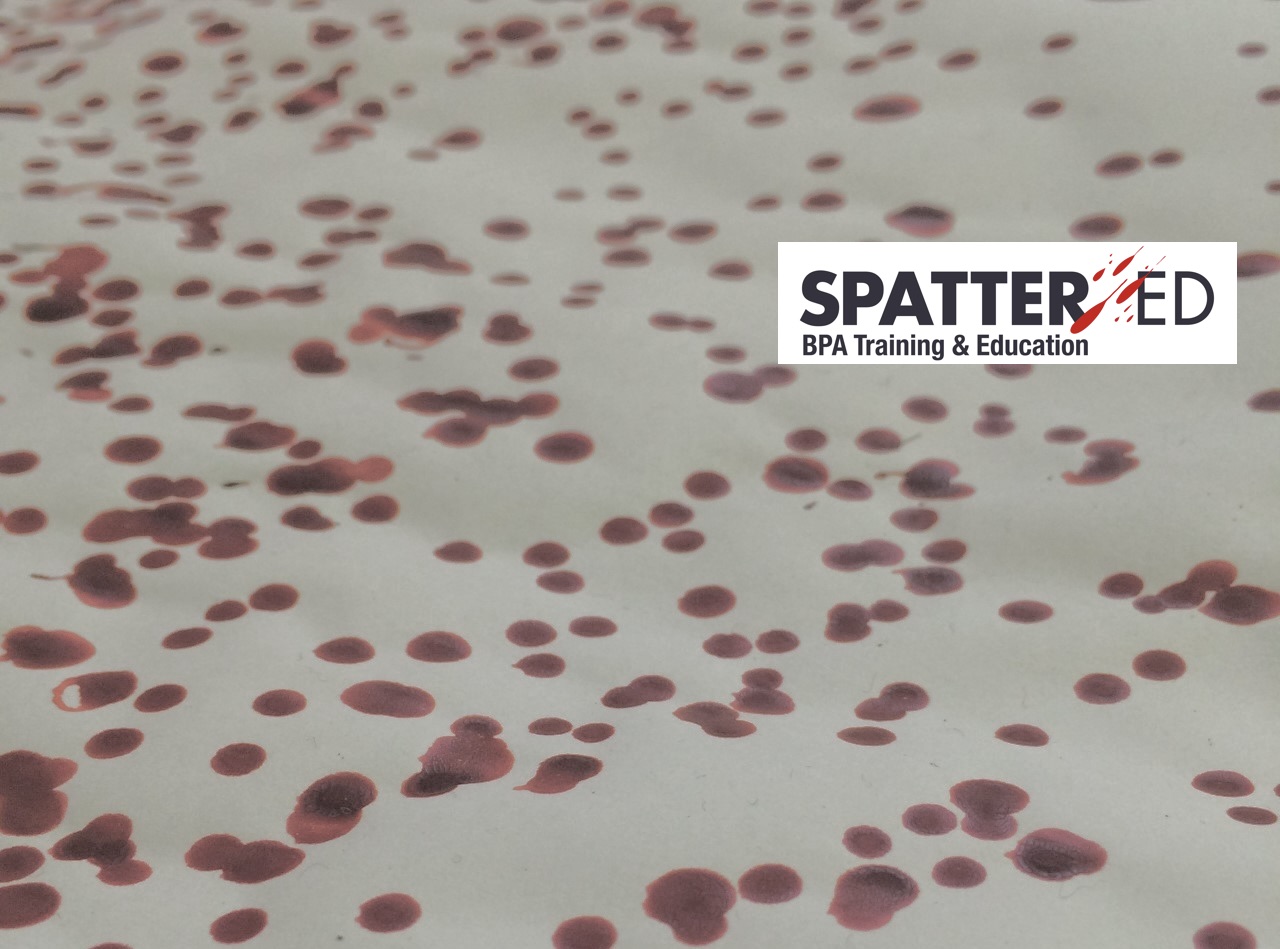
Basic Bloodstain Pattern Analysis (BPA) Training
The 5-day (40-hour) Basic BPA course will introduce participants to the science and techniques of BPA in the investigation of crime. The training uses classroom-based presentations to deliver teaching across 7 modules which address a wide range of topics from the historical basis of BPA to blood dynamics and stain classification. These are supported by practical (wet-room) sessions along with instructor demonstrations, syndicate exercises and individual practical assessments. The course meets the educational standards as defined by IABPA and OSAC and successful participants are able to apply for industry standard membership of the International Association of Bloodstain Pattern Analysts (IABPA).
COURSE OUTLINE
Module 1 - History and Literature of BPA
- Demonstrate an understanding of the history of BPA and key developments in the discipline of BPA, including research and awareness of the relevant literature.
Module 2 - Bloodstain Pattern Classification and Terminology
- Demonstrate the ability to identify and classify bloodstain patterns with reference to standardised terminology and develop an understanding of bloodstain pattern principles and their application to BPA.
Module 3 - Blood, Anatomy and Blood Dynamics
- Develop an understanding of blood biochemistry and the behaviour of liquid blood in flight including drop formation and oscillation, trajectories and secondary events; also an appreciation of human anatomy and physiology and an awareness of bloodletting injuries relevant to the production of bloodstain pattern(s).
Module 4 - Influences on Bloodstain Morphology and Mathematical Principles of BPA
- Demonstrate an understanding of the parameters that influence bloodstain morphology (size, shape, distribution and location) including the mechanism which generated them, target surface characteristics, blood volume, environmental factors and drying time.
- Demonstrate an understanding of the mathematical principles that relate to BPA, including an awareness of the methods used to measure bloodstains and bloodstain patterns and practical applications available to record BPA including reconstruction software.
Module 5 - Projected Blood
- Demonstrate an understanding of projected blood patterns including impact spatter, cast-off patterns, gunshot-generated spatter, arterial (vascular) damage stains and expirated blood. Demonstration of simulated arterial blood, where facilities allow.
Module 6 - Altered Blood, Passive and Transfer Stains
- Demonstrate an understanding of altered blood, including artefacts that are due to adulteration or insect activity and of blood deposited as a result of contact and passive mechanisms.
Module 7 - Scientific Approach to BPA
- Demonstrate an understanding of the scientific principles as they relate to BPA through the formulation of a case and examination strategy and application of a balanced approach to interpretation and evaluation of BPA, including an appreciation of BPA experimentation and approaches which assist in the reconstruction of a bloodletting event(s) and management of bias.

